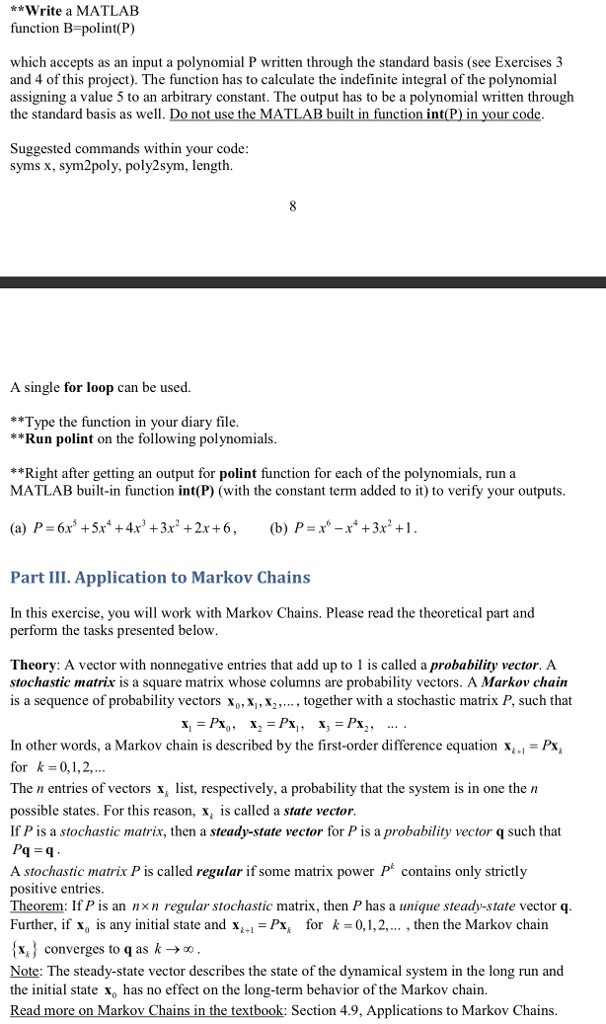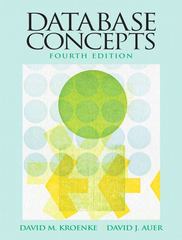Answered step by step
Verified Expert Solution
Question
1 Approved Answer
In this exercise you are given a polynomial and you will write a code that outputs an antiderivative of the polynomial. ***MATlab project, can you
In this exercise you are given a polynomial and you will write a code that outputs an antiderivative of the polynomial. 
***MATlab project, can you please help me out and make it super easy to copy and paste over??? I don't understand how to do it
**Write a MATLAB function B-polint(P) which accepts as an input a polynomial P written through the standard basis (see Exercises 3 and 4 of this project). The function has to calculate the indefinite integral of the polynomial assigning a value 5 to an arbitrary constant. The output has to be a polynomial written through the standard basis as well. Do not use the MATLAB built in function int(P) in your code uggested commands within your code syms x, sym2poly, poly2sym, length. A single for loop can be used. Type the function in your diary file Run polint on the following polynomials. **Right after getting an output for polint function for each of the polynomials, run a MATLAB built-in function int(P) (with the constant term added to it) to verify your outputs (a) P 6x5x +4x+3x2 +2x+6,(b) Px"-x+3x'1 Part III. Application to Markov Chains In this exercise, you will work with Markov Chains. Please read the theoretical part and perform the tasks presented below Theory: A vector with nonnegative entries that add up to 1 is called a probability vector. A stochastic matrix is a square matrix whose columns are probability vectors. A Markov chain is a sequence of probability vectors xp, x,,x2...., together with a stochastic matrix P, such that In other words, a Markov chain is described by the first-order difference equation xPx for k-0,1,2. The n entries of vectors x ist, respectively, a probability that the system is in one the n possible states. For this reason, xis called a state vector If P is a stochastic matrix, then a steady-state vector for P is a probability vector q such that A stochastic matrix P is called regular if some matrix power P contains only strictly positive entries. Theorem: If P is an n n regular stochastic matrix, then P has a unique steady-state vector q Further, if x0 is any initial state and Xk+1-PX, for k 0,1,2, , then the Markov chain xconverges to q as k->o. Note: The steady-state vector describes the state of the dynamical system in the long run and the initial state x has no effect on the long-term behavior of the Markov chain. Read more on Markov Chains in the textbook: Section 4.9, Applications to Markov ChainsStep by Step Solution
There are 3 Steps involved in it
Step: 1

Get Instant Access to Expert-Tailored Solutions
See step-by-step solutions with expert insights and AI powered tools for academic success
Step: 2

Step: 3

Ace Your Homework with AI
Get the answers you need in no time with our AI-driven, step-by-step assistance
Get Started


